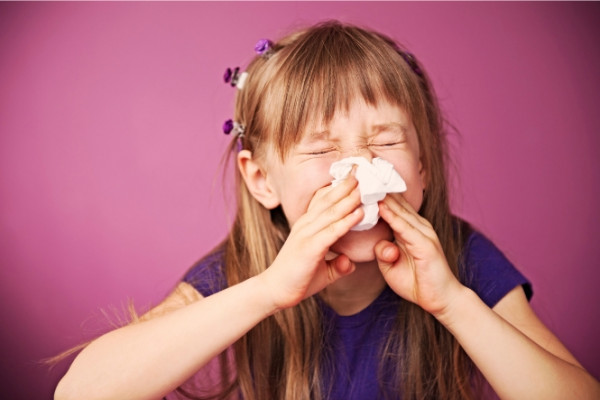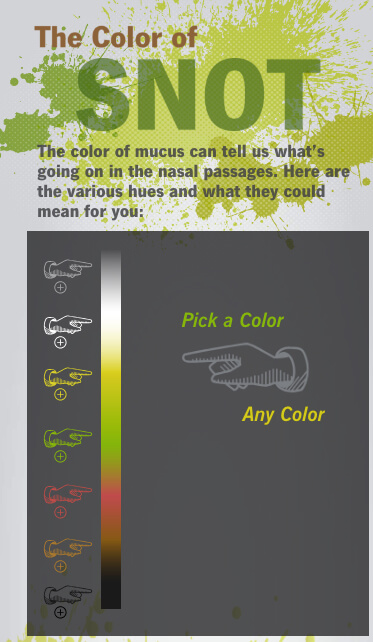Snot and sputum
Key points about snot and sputum
- Snot is mucus from your nose and sputum is mucus from your airways.
- Mucus production is normal. Without it, your nose and airways become dry and don’t work properly.
- Sometimes your body makes too much mucus which causes problems such as a blocked or runny nose and cough.

Snot is mucus produced in your nose by cells that line the inside surface. This mucus lining traps dust and germs that you breathe in.
Tiny hairs (called cilia) move the mucus down your nasal cavity to where you swallow. When you swallow, the mucus goes into your digestive system (gut) and is broken down.
You usually produce about 1–2 litres of mucus each day, but if your sinuses or other parts of your upper respiratory tract (upper airways) are inflamed, you can produce twice as much. Inflammation of your upper airways can be caused by dust, smoke, pollen, chemicals or infection.
If you have an infection, your body makes extra mucus to trap and get rid of the germs. The extra mucus that isn't swallowed comes out your nose as snot.

Image credit: Canva
The same process occurs in your lower respiratory tract (lower airways) – your trachea (windpipe), bronchi (airways into your lungs) and your lungs.
Mucus is produced by the lining of these airways to keep it moist, which makes it easier for the air you breathe to get past. Cilia move the mucus up towards your throat where you swallow it.
When you have an infection, your body makes extra mucus to trap and get rid of the germs. This triggers an increased urge to cough, and you cough up the mucus as sputum. Coughing also irritates your lower airways and leads to even more mucus production.
The colour of the mucus tells you what’s going on in your airways. It tells you how inflamed your tissues are and shows you that your immune system is fighting off the infection. The yellow-green colour of snot means there are more neutrophils, white blood cells that fight infection.
Changes in colour are usually not a cause for alarm and doctors don’t usually use this as part of their diagnosis.
Use this interactive tool to work out what the colour of your snot really means.(external link)

The colour of your snot or sputum doesn't tell you whether your infection is bacterial or viral. Antibiotics only work against bacterial infections. Taking antibiotics when you don’t need them can cause antibiotic resistance, can kill the good bacteria in your body as well as the bad, and may make you sick.
If you have a blocked or runny nose, you can try breathing in steam while you're in the shower, use a nasal decongestant or try a salt water (saline) nasal spray or rinse to get some relief.
A cough can sometimes settle by breathing in steam, sucking a cough lozenge or by using an inhaler from your healthcare provider. Read more about cough in adults and cough in children.
Read about the different respiratory tract infections to find out which one you have, whether you need to see a healthcare provider and what you can do to take care of yourself at home.
Colds
Cough in adults
Cough in children
Flu and influenza-like illnesses
Acute sinusitis | Pokenga pakohu ihu
Chronic sinusitis | Mate taringa-ihu-korokoro
Acute bronchitis
Respiratory tract infections | Pokenga atewharowharo
Apps
Breathing apps
Self-management and healthy living apps
References
- Cold season – managing without antibiotics(external link) BPAC, NZ, 2018
- Why do we have snot and where does it come from?(external link) Healthline, US, 2018
- Catarrh(external link) NHS, UK, 2022
Credits: Healthify editorial team. Healthify is brought to you by Health Navigator Charitable Trust.
Reviewed by: Dr Art Nahill, Consultant General Physician and Clinical Educator.
Last reviewed:





